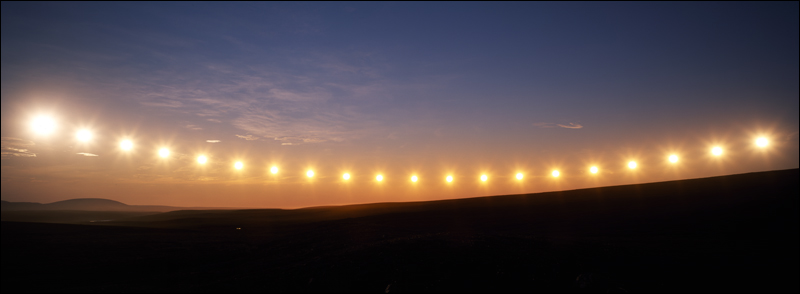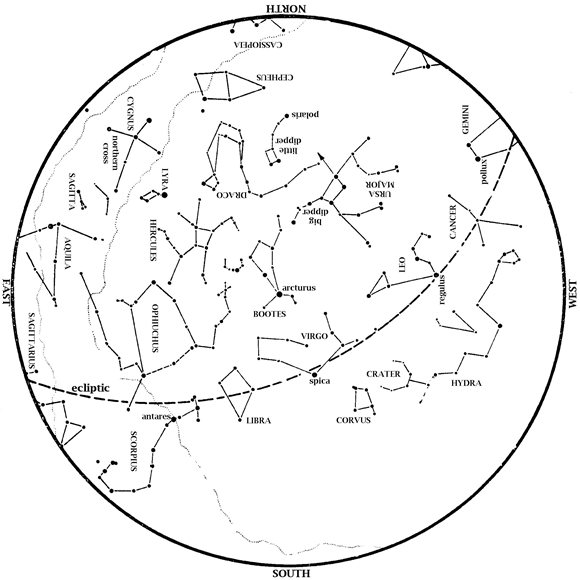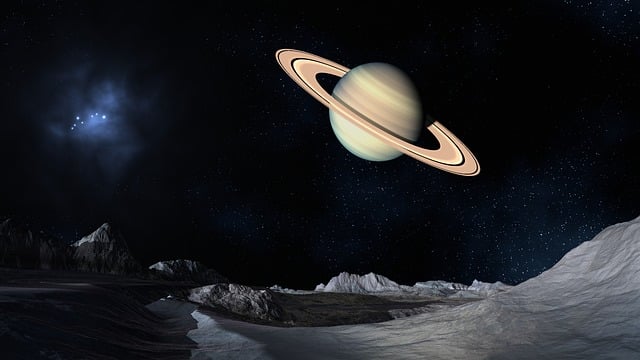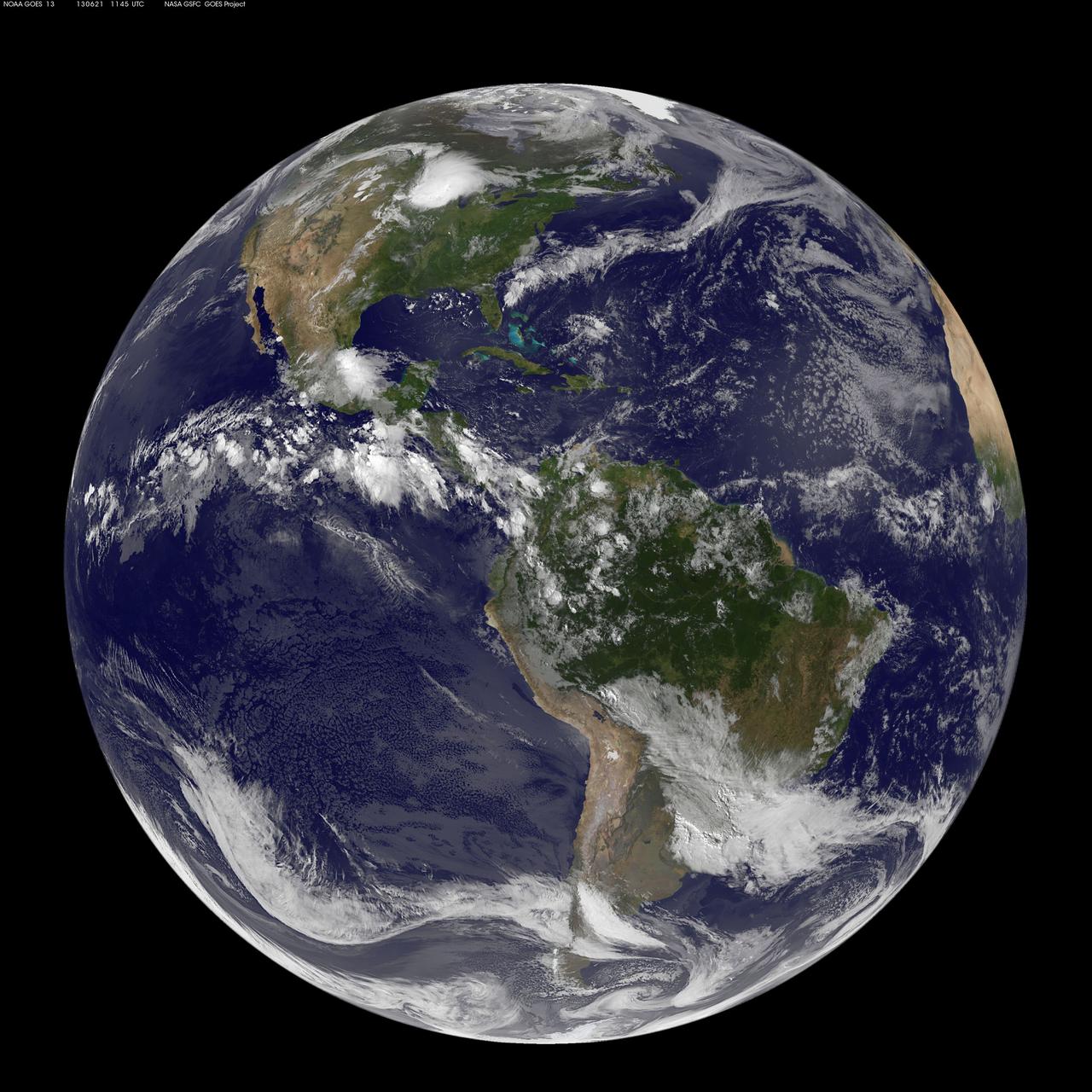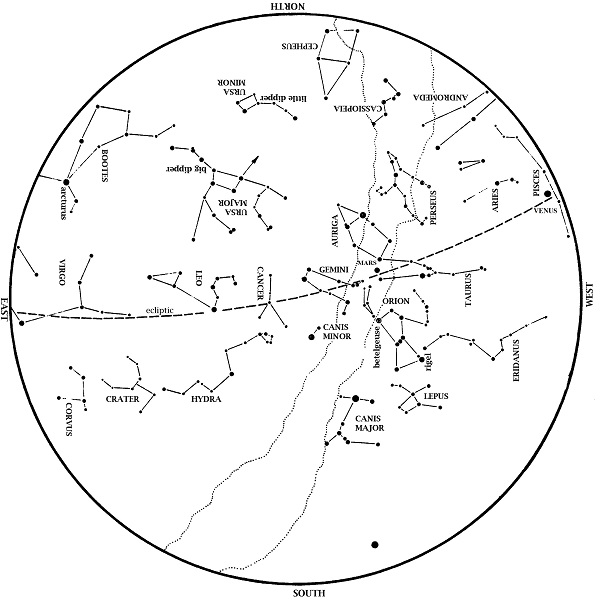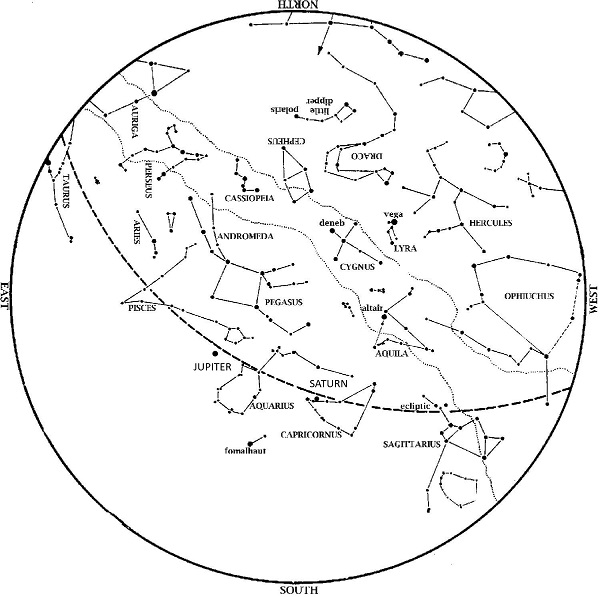
This star map shows the Houston sky at 10 p.m. CDT on June 1, 9 p.m. CDT on June 15, and dusk on June 30. To use the map, put the direction you are facing at the bottom. Jupiter sets in the west in Gemini, the Twins. The Big Dipper is as high as it gets in the north. Leo, the Lion, is high in the west at dusk. From the Big Dipper’s handle, arc to Arcturus and then speed on to Spica in the south. Saturn is left of Spica in Libra. Cygnus, Lyra, and Aquila form the Summer Triangle in the east, as Scorpius and Sagittarius rise in the southeast. Summer has arrived.
This month, Jupiter remains in the evening sky for one more month. Look for it low in the west at dusk, outshining all the stars we ever see at night.
Mars is in the southwest at dusk this month. Mars continues to fade a little each night as Earth continues to leave it farther behind. Still, Mars rivals the brightest stars we see at night.
Saturn was up all night long last month. Now, it remains well-placed for evening observing. Look low in the southeast at dusk.
Venus remains in the morning sky. Look east at dawn for the brightest point of light there; only the Sun and Moon outshine Venus. Venus remains a morning star for almost all of 2014.
The Big Dipper is above the North Star, with its handle pointing up. From that handle, you can ‘arc to Arcturus’ and then ‘speed on to Spica’; those stars are in the south at dusk. Leo, the Lion, is high in the west at dusk.
Antares, the brightest star of Scorpius, the Scorpion, is in the southeast, with the ‘teapot’ of Sagittarius rising behind it. The Summer Triangle has fully risen in the northeast. The stars of summer are here.
1st Quarter: June 5, 3:40 p.m.
Full: June 12, 11:13 p.m.
Last Quarter: June 19, 1:39 p.m.
New: June 27, 3:09 a.m.
At 5:51 a.m. on Saturday, June 21, the Sun is directly overhead at the Tropic of Cancer — the farthest point north where the Sun can be overhead. This therefore marks our summer solstice. On this date, those of us in the northern hemisphere experience the longest day and shortest night of the year, and the midday Sun is as high as possible in the sky. From the Southern Hemisphere, the Sun is as low as possible in the sky on June 21. Folks down there have their shortest day and longest night on their winter solstice.
Interestingly, we see our earliest sunrise on June 11 and latest sunset on July 1. These are not on the solstice because Earth does not orbit the Sun at constant speed. Rather, Earth speeds up a little near perihelion (January) and slows down a little near aphelion (July). Thus, for a period extending 10 days before and after the solstice, both sunrise and sunset occur a little later each day. (This close to the solstice, the difference in the height of the Sun each day changes only imperceptibly, allowing this small secondary effect to dominate). As most of us sleep through sunrise and are awake at sunset, days will seem to lengthen all the way through June.
 Looking for a cool way to ring in the summer heat? Come out for our Summer Solstice party (part of our Mixers & Elixirs series) on June 21!
Looking for a cool way to ring in the summer heat? Come out for our Summer Solstice party (part of our Mixers & Elixirs series) on June 21!
Want to learn more about the night sky? Click here for the HMNS Planetarium Schedule.
On most clear Saturday nights at the George Observatory, you can hear me do live star tours on the observation deck with a green laser pointer. If you’re there, listen for my announcement.
Clear skies!


